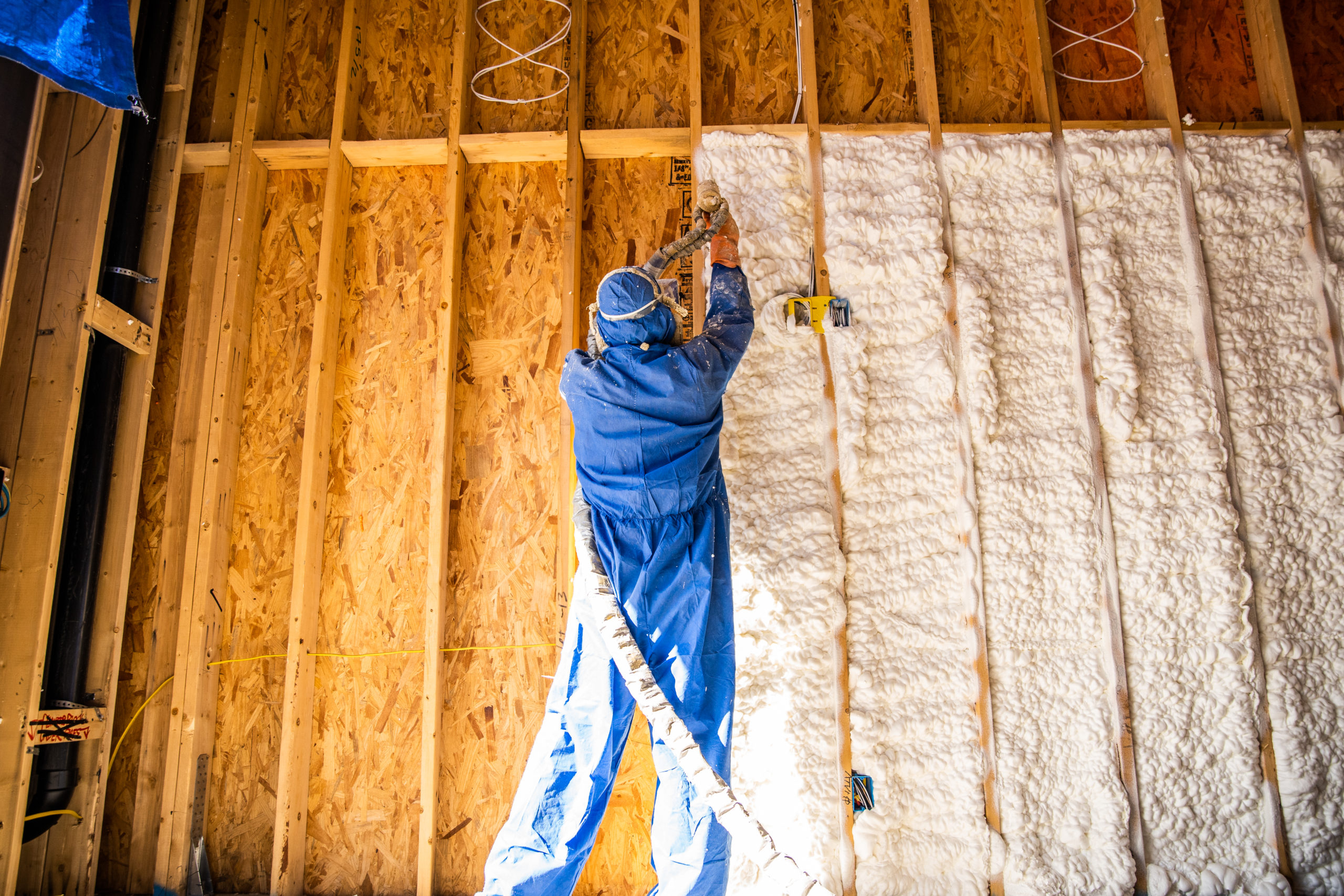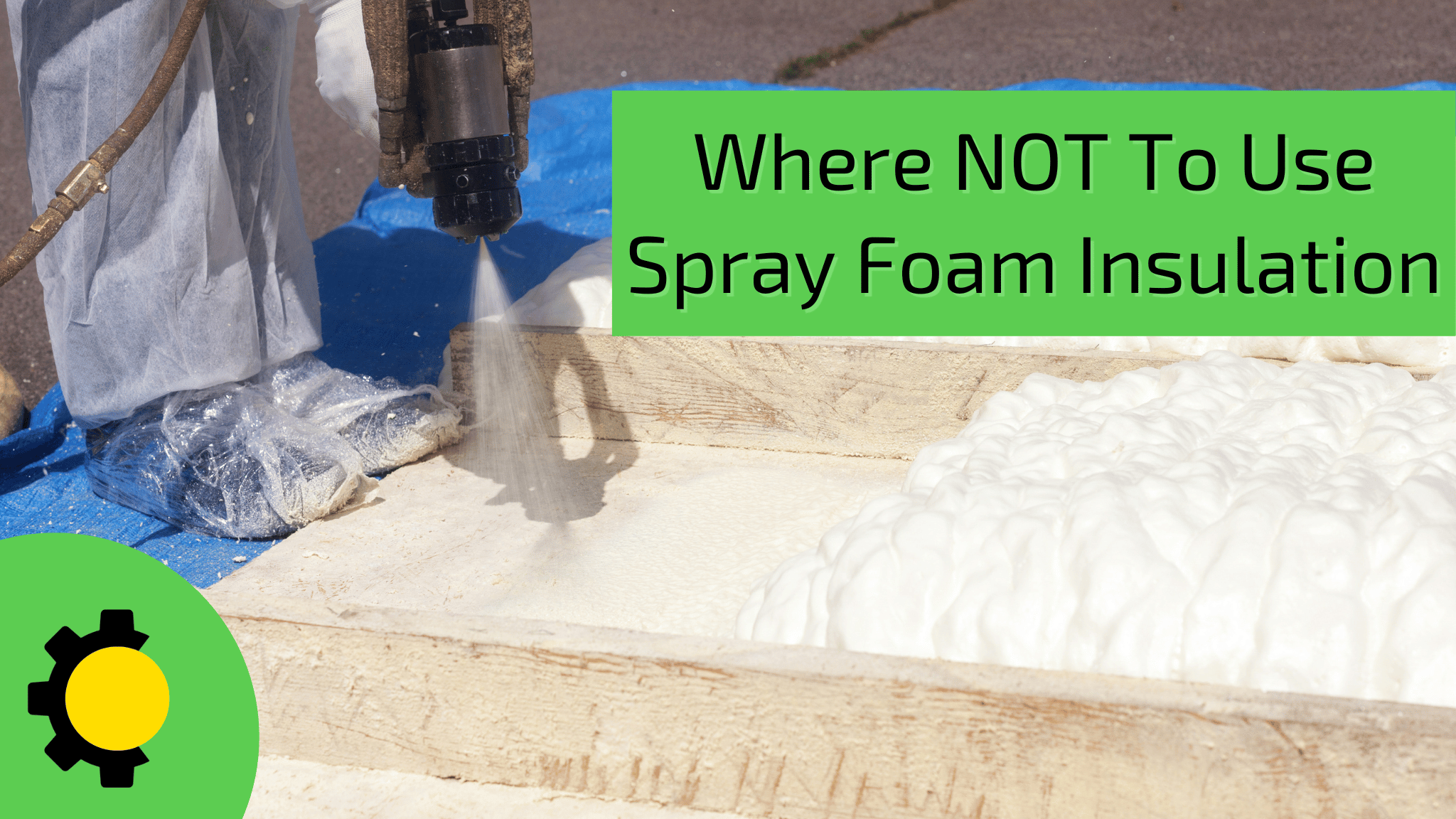Tips for Preserving Your Spray Foam Insulation for Long-Term Efficiency
Tips for Preserving Your Spray Foam Insulation for Long-Term Efficiency
Blog Article
Spray Foam: The Ultimate Remedy for Air Sealing and Insulation
Spray foam insulation has become a leading option for reliable air securing and thermal insulation, providing an one-of-a-kind combination of buildings that establish it besides typical methods. Its capability to expand and fill spaces makes it particularly effective in avoiding air leak, which can dramatically impact energy performance. However, comprehending the complete scope of its advantages, installment procedures, and contrasts with other insulation types is vital for making informed choices. As we discover these facets, the ramifications for both new buildings and retrofits come to be progressively considerable. What aspects should affect your option?
What Is Spray Foam?
Spray foam is a flexible insulation product that incorporates the principles of air sealing and thermal resistance to enhance energy performance in buildings. Composed mainly of polyurethane or other comparable compounds, spray foam is applied as a fluid that increases upon call with surfaces, creating a solid, continual layer of insulation. This one-of-a-kind residential or commercial property enables it to fill up spaces, fractures, and spaces that typical insulation materials might overlook, giving a superior air seal.
There are 2 major kinds of spray foam: open-cell and closed-cell. Open-cell spray foam is lighter and more flexible, using outstanding audio absorption and a lower R-value per inch - Spray Foam. In comparison, closed-cell spray foam is denser, supplying a greater R-value, dampness resistance, and included architectural stability to building components
The application procedure usually entails specific equipment, making sure a seamless application that sticks to different substrates, consisting of wood, concrete, and steel. This versatility makes spray foam ideal for both brand-new building and constructions and retrofitting existing frameworks. Its ability to create an impermeable barrier significantly adds to reducing energy intake and boosting indoor air high quality, thereby making it a recommended selection among homeowners and builders alike.
Benefits of Spray Foam Insulation
Among one of the most substantial benefits of spray foam insulation is its outstanding ability to produce a constant air obstacle, which effectively reduces power loss. Unlike traditional insulation materials, spray foam expands to fill cracks and spaces, making sure that air leakage is considerably reduced. This particular not just boosts power performance yet additionally results in decrease utility bills with time.
Additionally, spray foam insulation offers exceptional thermal resistance, contributing to a more secure interior atmosphere. Its high R-value per inch enables effective insulation in constrained rooms, making it suitable for attic rooms, wall surfaces, and crawl spaces. The moisture-resistant residential properties of spray foam assistance avoid mold and mildew and mold growth, advertising healthier living conditions.
An additional crucial advantage of spray foam insulation is its sound-dampening qualities (Spray Foam). It properly decreases noise transmission in between areas, developing a quieter and extra comfortable home atmosphere. The durability of spray foam likewise stands out, as it does not sag or resolve gradually, maintaining its performance throughout its life expectancy
How Spray Foam Works
Recognizing how spray foam insulation works is crucial for appreciating its performance in air sealing and thermal resistance. Spray foam insulation includes 2 main parts: isocyanate and polyol resin. When these components are blended, they undertake a chain reaction that creates the material to expand rapidly, creating a dense foam that fills up spaces, dental caries, and cracks.
As the foam increases, it follows surface areas, developing an airtight seal that considerably minimizes air seepage. This particular makes spray foam insulation very effective at protecting against drafts and wetness infiltration, which can result in energy loss and damage over time. Furthermore, the closed-cell variant of spray foam supplies remarkable thermal resistance due to its stiff framework, successfully lessening heat transfer.
The distinct residential properties of spray foam allow it to adapt uneven surface areas, making certain comprehensive insurance coverage and a smooth obstacle. Therefore, spray foam insulation not only enhances energy effectiveness however additionally adds to improved interior air quality by reducing the buildup of irritants and pollutants. Eventually, recognizing the auto mechanics behind spray foam underscores its role as an exceptional selection for click to read more insulation and air securing in both business and property applications.
Installation Process Introduction

Before installment, the space has to be properly cleaned up and prepped, making certain that surfaces are without particles, dust, and dampness. This action is crucial since pollutants can jeopardize attachment and general performance. Once the area is prepared, the application involves blending both elements of the spray foam, which broadens upon call and fills up voids properly.
Educated experts must carry out the installation, using customized devices to make certain uniform coverage and ideal thickness. Safety and security safety measures, including using protective equipment and guaranteeing correct ventilation, are imperative throughout this procedure. After application, the foam generally remedies promptly, forming a strong obstacle that improves energy efficiency.
Contrasting Spray Foam to Typical Insulation
When evaluating insulation options, spray foam insulation stands apart in contrast to conventional materials such as fiberglass and cellulose. One of the main advantages of spray foam is its exceptional air sealing capabilities. Unlike fiberglass and cellulose, which can allow air seepage, spray foam broadens upon application, loading holes and spaces to produce a closed seal. This leads to enhanced power effectiveness, as less warmed or cooled air leaves the home, leading to lower utility costs.
Additionally, spray foam provides a higher R-value per inch than typical insulation kinds, offering more efficient thermal resistance in a thinner account. This characteristic is specifically helpful in spaces with minimal cavity depth. Furthermore, spray foam is immune to moisture and mold and mildew development, which can be a significant concern with cellulose and fiberglass, particularly in moist atmospheres.
Nevertheless, spray foam insulation generally carries a higher upfront cost than its typical counterparts. Home owners have to evaluate this initial investment versus lasting power financial savings and performance benefits. Ultimately, while both insulation types offer their purpose, spray foam arises as a more sophisticated service for contemporary insulation needs, specifically in terms of air sealing and thermal efficiency.

Conclusion
In recap, spray foam insulation represents an extremely reliable solution for achieving optimal air sealing and thermal resistance. Its special homes, including wetness resistance and audio dampening, navigate to this website make it suitable for numerous applications in both new building and constructions and retrofitting tasks (Spray Foam). The first costs might be greater contrasted to typical insulation materials, the long-lasting advantages, such as significant energy savings and boosted indoor air high quality, warrant the investment and emphasize its value in contemporary structure methods.
Spray foam insulation has actually arised as a leading remedy for reliable air sealing and thermal insulation, supplying an unique mix of buildings that set it apart from traditional techniques.Spray foam is a functional insulation product that combines the concepts of air securing and thermal resistance to boost power performance in buildings.When evaluating insulation choices, spray foam insulation stands out in comparison to conventional materials such as fiberglass and cellulose. Ultimately, while both insulation types offer their function, spray foam emerges as a more sophisticated remedy for modern insulation demands, specifically in terms of air sealing and thermal performance.
In summary, spray foam insulation represents a highly effective remedy for accomplishing optimal air securing and thermal resistance.
Report this page